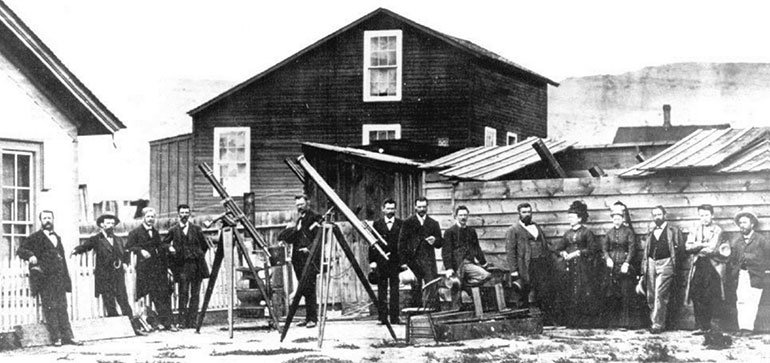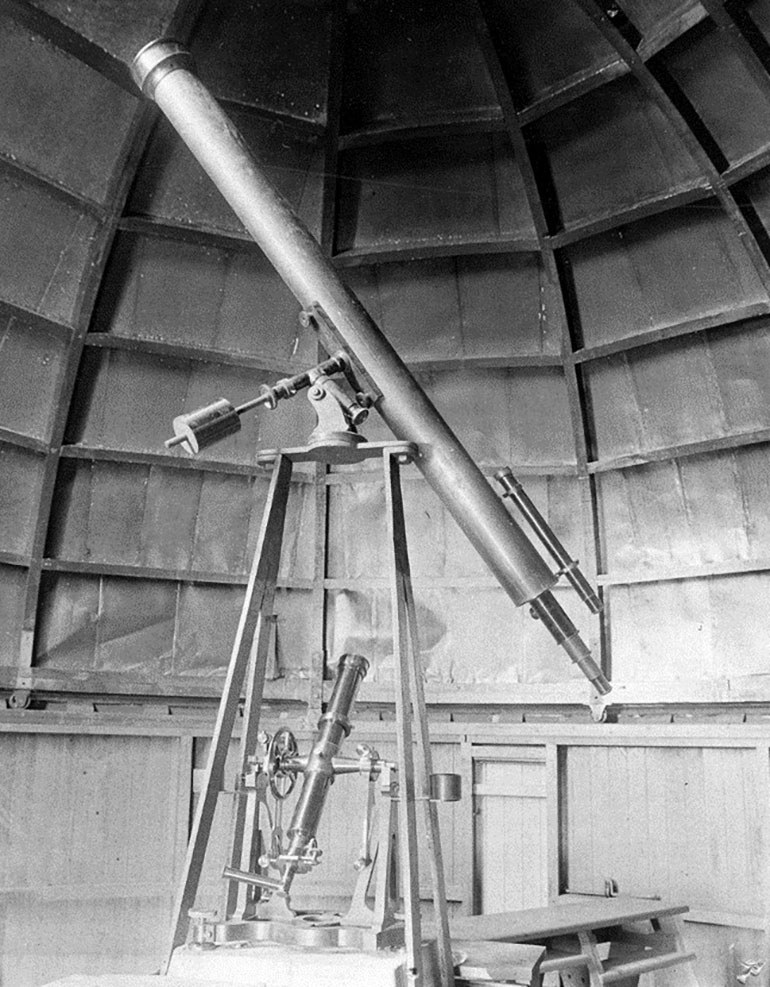
If you watched the recent solar eclipse, you likely used special solar filter glasses. But to see this rare astronomical event as it passed over North America in 1878, you needed some serious equipment. Eastern's Sherzer Observatory has an example of one of these rare instruments, made even more special by the man who used it.
In the late 19th century, astronomers were puzzled by the strange orbit of the planet Mercury. Today, we know its odd oblong path is due to the curvature of gravity. But back then, scientists theorized that an undiscovered planet called Vulcan caused the aberration.

EMU's 4-inch Alvan Clark refractor telescope was a gift from the citizens of Ypsilanti.
To test the theory, a group of prominent scientists traveled to Rawlins, Wyoming Territory, to see if they could spot Vulcan during a total solar eclipse. Thomas Edison, who had become nationally famous for his recently patented phonograph, accompanied the group. He wanted to test his “tasimeter,” a new invention that could detect infrared light and estimate the temperature of remote objects. Edison hoped to measure the heat of the sun's corona as the photosphere was blocked by the moon.
Edison's instrument failed, as it was too sensitive to handle the extreme temperature changes during the eclipse. The scientists also didn't find Vulcan, since it doesn't exist. But the group, including Edison, did view the eclipse through a brass Alvan Clark & Sons refractor telescope borrowed from Eastern (then called Michigan State Normal School).
The telescope has remained with Eastern as a proud possession in the observatory offices since its return. Luckily, it survived a fire at the original observatory in Sherzer Hall in 1989.
Alvan Clark instruments remain highly sought after by collectors and amateur astronomers. But there are few with the famous provenance of Eastern's example.
